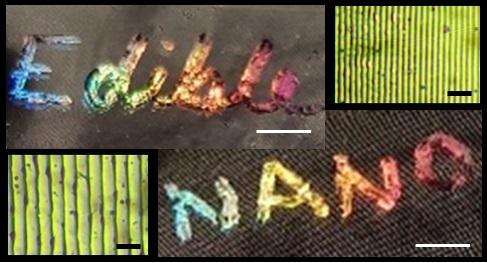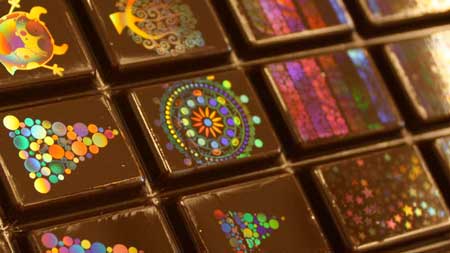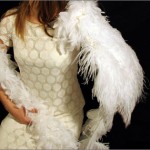
Where food safety is concerned, much of the research I’ve seen is focused on adding senors to the packaging rather than direct application to the foodstuff but this is different, from a February 17, 2021 news item on phys.org,
Holograms are everywhere, from driver’s licenses to credit cards to product packaging. And now, edible holograms could someday enhance foods. Researchers reporting in ACS [American Chemical Society] Nano have developed a laser-based method to print nanostructured holograms on dried corn syrup films. The edible holograms could also be used to ensure food safety, label a product or indicate sugar content, the researchers say.
…
A February 17, 2021American Chemical Society news release (also on EurekAlert), which originated the news item,
Most holograms are imprinted with lasers onto metal surfaces, such as aluminum, but the materials aren’t edible. For foods, holograms made with nanoparticles have been proposed, but the tiny particles can generate reactive oxygen species, which might be harmful for people to eat. In a different approach, food scientists have molded edible holograms onto chocolate, but the process only works for certain types of the confection, and a different mold is needed for each hologram design. Bader AlQattan, Haider Butt and colleagues wanted to find a safe, fast and versatile way to pattern edible holograms onto a variety of foods.
To develop their method, the researchers made a solution of corn syrup, vanilla and water and dried it into a thin film. They coated the film with a fine layer of non-toxic black dye. Then, they used a technique called direct laser interference patterning to etch off most of the dye, leaving behind raised, nanoscale lines that formed a diffraction grating. When struck by light, the nanostructure diffracted the light into a rainbow pattern, with different colors appearing at different angles of viewing. The team could control the intensity and range of colors by varying the spacing between lines in the grating or the sugar content of the corn syrup film. Before edible holograms are ready to hit store shelves, however, the researchers want to adapt the method to a food-grade dye that could replace the synthetic black dye used in these pilot experiments.
Here’s a link to and a citation for the paper,
Direct Printing of Nanostructured Holograms on Consumable Substrates by Bader AlQattan, Joelle Doocey, Murad Ali, Israr Ahmed, Ahmed E. Salih, Fahad Alam, Magdalena Bajgrowicz-Cieslak, Ali K. Yetisen, Mohamed Elsherif, and Haider Butt. ACS Nano 2021, 15, 2, 2340–2349 DOI: https://doi.org/10.1021/acsnano.0c02438 Publication Date:February 1, 2021 Copyright © 2021 American Chemical Society
This paper appears to be open access.
It seems these scientists are also considering the aesthetic possibilities. Ffrom the paper, Note: Links have been removed,
…
The use of holograms in food could potentially improve sensory appeal [emphasis mine] and, through biosensing, could increase health and safety.(1,2) Holograms can even be used to store information as edible microtags.(3) They are also attractive to the eye as they produce rainbow patterns with light. Using edible holograms on foods, not only as decoration but also to sense harmful bacteria, could improve food quality/lifetime monitoring.(4,5) Food holograms which signify a qualitative information about the sugar contents could be of value in controlling the sugar consumption, that is challenging to be measured at the moment.(6)
…
As it is, I find food pretty attractive. So, I’m not sure why there’s a need to improve its sensory appeal. On the other hand, I can’t argue with increased food safety.
Should you be interested in more about holograms and their current applications, including chocolate decoration, you can check out Michael Berger’s February 17, 2021 Nanowerk Spotlight article.

What do you think about decorating food with holograms? If you feel inclined, do let me know in the comments.
